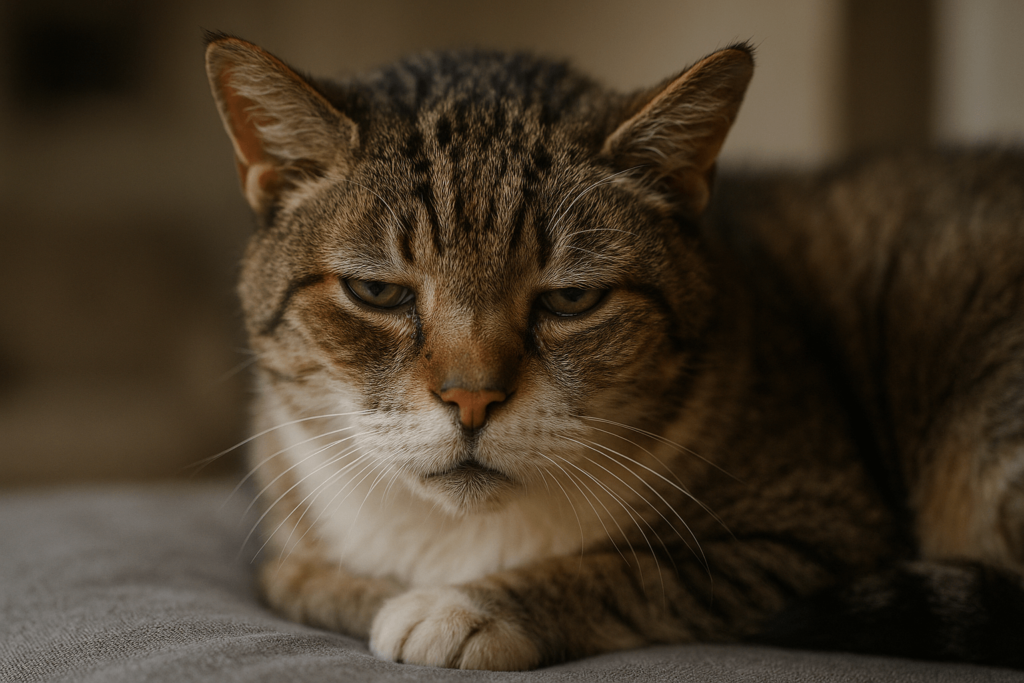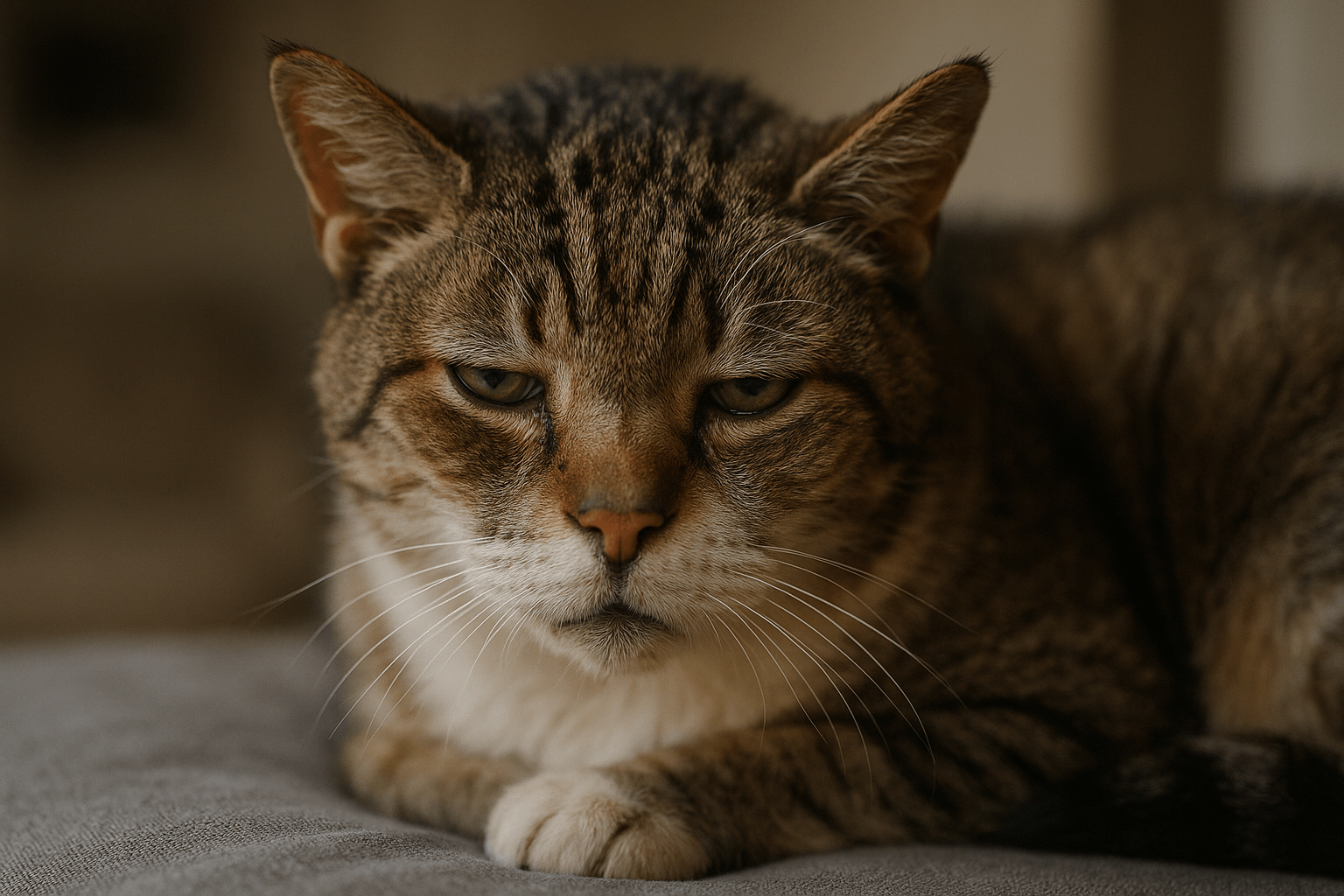Senior Cat Diabetes Symptoms: Early Signs You Can’t Afford to Miss
Diabetes in senior cats isn’t just a statistic — it’s a silent, progressive condition that affects nearly 1 in 230 cats over the age of 10. Left undetected, it can lead to devastating complications: nerve damage, kidney failure, even life-threatening ketoacidosis. But here’s the truth: early detection changes everything. Recognizing the subtle, often overlooked symptoms of diabetes in your aging feline is the most powerful tool you have to protect their quality of life — and extend it.
The Hidden Warning Signs of Diabetes in Senior Cats
Diabetes doesn’t announce itself with dramatic crashes — it whispers. In senior cats, symptoms often creep in slowly, masked by the natural changes of aging. Missing these signs means missing critical windows for intervention.
Increased Thirst and Urination:
Your cat is drinking more water than ever and visiting the litter box far more frequently — sometimes even outside it. This is the body’s attempt to flush excess glucose through the kidneys.Unexplained Weight Loss Despite Normal or Increased Appetite:
They’re eating more, yet losing muscle mass — a classic red flag. Their body can’t use glucose for energy, so it breaks down fat and muscle instead.Lethargy and Reduced Activity:
Your once-vigilant senior cat now sleeps more, avoids jumping, and shows little interest in play. This isn’t just “getting old” — it’s metabolic fatigue.Poor Coat Condition:
Their fur looks dull, matted, or unkempt. Diabetic cats often neglect grooming due to weakness or discomfort.Weakness in Hind Legs (Plantigrade Stance):
They walk with their hocks touching the ground — a telltale sign of diabetic neuropathy caused by nerve damage from prolonged high blood sugar.
These symptoms may seem minor individually — but together, they form a pattern that demands attention. Ignoring them is not an option.

Why Senior Cats Are Especially at Risk for Diabetes
Age isn’t just a number — it’s a biological turning point. As cats enter their golden years, their bodies become more vulnerable to metabolic disruption.
Pancreatic Decline:
The pancreas produces less insulin over time, reducing the body’s ability to regulate blood sugar effectively.Chronic Inflammation:
Older cats often have low-grade inflammation from years of wear, which interferes with insulin sensitivity.Obesity History:
Many senior cats were overweight earlier in life — a major risk factor for insulin resistance.Medication Interactions:
Drugs like corticosteroids, commonly prescribed for arthritis or allergies, can trigger or worsen diabetes.Reduced Physical Activity:
Less movement means fewer calories burned and poorer glucose utilization — creating a perfect storm for hyperglycemia.
Understanding these biological shifts helps explain why diabetes strikes so often in cats over 10. It’s not random — it’s predictable. And predictability means prevention is possible.
Check this guide 👉Understanding Cat Blood Sugar Levels: Best 7 Expert Tips!
Check this guide 👉What is Dangerously High Blood Sugar for a Cat? Best 7 Tips!
Check this guide 👉Understanding the Cost of Cat Diabetes Treatment: Best 7 Tips
| Early Symptom | What It Means for Your Cat |
|---|---|
| Frequent urination and increased thirst | Kidneys are working overtime to remove excess sugar from the bloodstream. |
| Weight loss despite good appetite | Body burns fat and muscle for energy because cells can’t access glucose. |
| Lethargy and reduced mobility | Low energy levels stem from cellular starvation due to insulin resistance. |
| Dull, unkempt coat | Weakness or discomfort reduces grooming behavior, leading to poor hygiene. |
| Weak hind legs (plantigrade stance) | Nerve damage from prolonged high blood sugar affects muscle control. |
How Diabetes Affects a Senior Cat’s Daily Life
Diabetes doesn’t just change your cat’s health — it reshapes their world. What was once routine becomes a struggle.
Litter Box Changes:
Your cat may start urinating outside the box due to urgency or confusion — not defiance. This is a medical emergency, not a behavioral issue.Appetite Fluctuations:
They may suddenly lose interest in food — or eat voraciously — as their body fights to find usable energy.Nighttime Restlessness:
High glucose levels can cause discomfort, leading to pacing, vocalizing, or trouble settling down.Dehydration Signs:
Dry gums, sunken eyes, or skin that doesn’t snap back when gently pinched indicate fluid loss from excessive urination.Vomiting or Nausea:
As the body breaks down fat for fuel, toxic byproducts called ketones build up, triggering nausea and vomiting.
These aren’t quirks of aging. They’re survival signals. Your cat is telling you something is deeply wrong — and they can’t ask for help.
The Dangers of Delaying Diagnosis
Waiting to act can turn manageable diabetes into a crisis.
Diabetic Ketoacidosis (DKA):
A life-threatening condition where the body floods the bloodstream with ketones. Symptoms include vomiting, rapid breathing, and sweet-smelling breath. This requires emergency care.Neuropathy Progression:
Untreated nerve damage in the hind legs can become permanent, leaving your cat unable to jump or use the litter box properly.Secondary Infections:
High glucose levels create a breeding ground for urinary tract and skin infections — common in diabetic seniors.Liver Disease (Hepatic Lipidosis):
If your cat stops eating due to nausea or weakness, their liver can become overwhelmed with fat, leading to rapid, fatal liver failure.Reduced Lifespan:
With early treatment, diabetic cats can live for years with a good quality of life. Without it, survival is often measured in weeks.
Every day without diagnosis increases risk. Early detection isn’t just helpful — it’s lifesaving.
What to Do If You Suspect Diabetes in Your Senior Cat
Time is your most valuable resource. Here’s how to respond quickly and wisely.
Schedule a Vet Visit Immediately:
Don’t wait for symptoms to worsen. Bring a urine sample if possible — it helps speed up diagnosis.Document Changes:
Keep a log of water intake, urination frequency, weight changes, and appetite. Photos of posture or behavior can help your vet spot subtle signs.Avoid Home Remedies:
Never attempt to treat diabetes with supplements or diet changes alone. Insulin therapy is often essential.Prepare for Testing:
Your vet will likely run blood glucose tests, fructosamine levels, and a urinalysis to confirm diagnosis.Stay Calm — It’s Manageable:
With proper care, many diabetic cats live happy, active lives for years. You’re not facing a death sentence — you’re starting a new chapter.
Knowledge reduces fear. Action reduces risk.
Managing Diabetes: Diet, Insulin, and Lifestyle Adjustments
Diabetes isn’t a death sentence — it’s a chronic condition that can be stabilized with consistent care.
High-Protein, Low-Carb Diet:
Wet food with minimal carbohydrates is ideal. Many diabetic cats thrive on prescription diabetic diets or grain-free wet formulas.Insulin Injections:
Most cats require twice-daily insulin injections. With training, most owners find this manageable — and far less stressful than expected.Consistent Feeding Schedule:
Feed at the same times each day, ideally around insulin administration. Irregular meals cause dangerous glucose spikes.Weight Management:
Even modest weight loss (5–10%) can significantly improve insulin sensitivity in overweight seniors.Regular Monitoring:
Blood glucose curves, periodic vet checkups, and home urine testing (if recommended) help fine-tune treatment.
This isn’t about perfection — it’s about consistency. Small, daily actions create long-term stability.
When to Seek Emergency Care
Not all symptoms require a vet appointment — some require an ambulance.
Vomiting and Refusal to Eat for More Than 24 Hours
This can trigger hepatic lipidosis — a rapidly fatal condition.Lethargy, Collapse, or Seizures
These indicate dangerously low or high blood sugar — immediate intervention is critical.Sweet or Fruity-Smelling Breath
A sign of ketones in the blood — hallmark of ketoacidosis.Rapid or Labored Breathing
Indicates metabolic imbalance and possible DKA.Inability to Stand or Walk
Sudden hind-leg weakness may signal acute neuropathy or hypoglycemia.
If you see any of these, go to an emergency vet immediately. Don’t wait until morning.
Frequently Asked Questions About Senior Cat Diabetes
Can a senior cat develop diabetes even if they’ve always been healthy?
Yes. Diabetes can develop suddenly in older cats due to aging, medication, or undiagnosed obesity — even in previously healthy cats.
Is diabetes painful for cats?
Not directly — but complications like neuropathy or infections can cause discomfort. Proper management prevents pain.
How much does diabetes treatment cost monthly?
Typically $30–$80/month for insulin, syringes, and diet. Initial diagnostics may cost $200–$500, but long-term care is often affordable.
Can I feed my diabetic cat dry food?
Not recommended. Dry food is high in carbohydrates, which spike blood sugar. Wet, low-carb food is the gold standard.
Will my cat need insulin forever?
Some cats go into remission with early, aggressive treatment — especially if diet and weight are managed well. Others require lifelong insulin.
Embracing the Journey: Love, Patience, and Prevention
Diabetes in your senior cat isn’t the end — it’s a call to deeper connection. It’s a chance to learn their rhythms, honor their needs, and show up for them in ways you never imagined. The trembling paws, the quiet grooming, the extra naps — these aren’t signs of decline. They’re invitations to care, to observe, to act with compassion.
You’ve been their safe place since day one. Now, you’re their lifeline. With early detection, consistent care, and unwavering love, your senior cat can still purr on your lap, chase a feather toy, and nap in the sunbeam — just as they always have.
Canned Pumpkin for Cat Diarrhea: Best 7 Expert Tips! Natural remedy to firm stools, soothe upset bellies, and support gut health safely.
Can a Cat Give You Scabies? Best 7 Expert Tips! Discover the truth about feline mites, human skin risks, and how to protect yourself—without panic.
Cat Flea vs Human Flea: Best 7 Expert Tips! Discover the truth about bites, species, and how to eliminate infestations for good.
Weird Cat Behaviors: Best 7 Expert Tips! Discover why cats do strange things—and how to understand, not punish, their instincts for a happier home.





